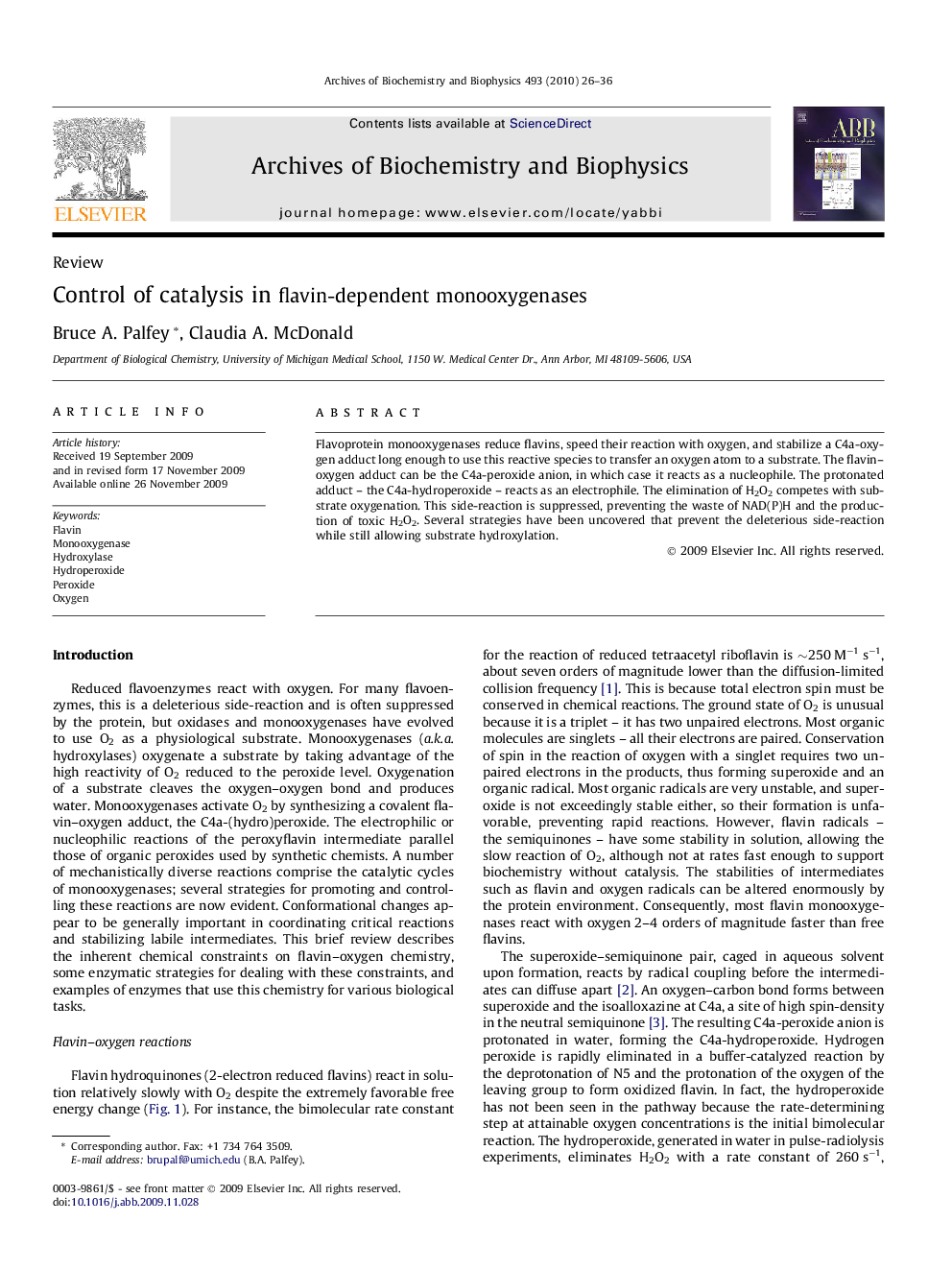| Article ID | Journal | Published Year | Pages | File Type |
|---|---|---|---|---|
| 1926193 | Archives of Biochemistry and Biophysics | 2010 | 11 Pages |
Abstract
Flavoprotein monooxygenases reduce flavins, speed their reaction with oxygen, and stabilize a C4a-oxygen adduct long enough to use this reactive species to transfer an oxygen atom to a substrate. The flavin–oxygen adduct can be the C4a-peroxide anion, in which case it reacts as a nucleophile. The protonated adduct – the C4a-hydroperoxide – reacts as an electrophile. The elimination of H2O2 competes with substrate oxygenation. This side-reaction is suppressed, preventing the waste of NAD(P)H and the production of toxic H2O2. Several strategies have been uncovered that prevent the deleterious side-reaction while still allowing substrate hydroxylation.
Related Topics
Life Sciences
Biochemistry, Genetics and Molecular Biology
Biochemistry
Authors
Bruce A. Palfey, Claudia A. McDonald,
